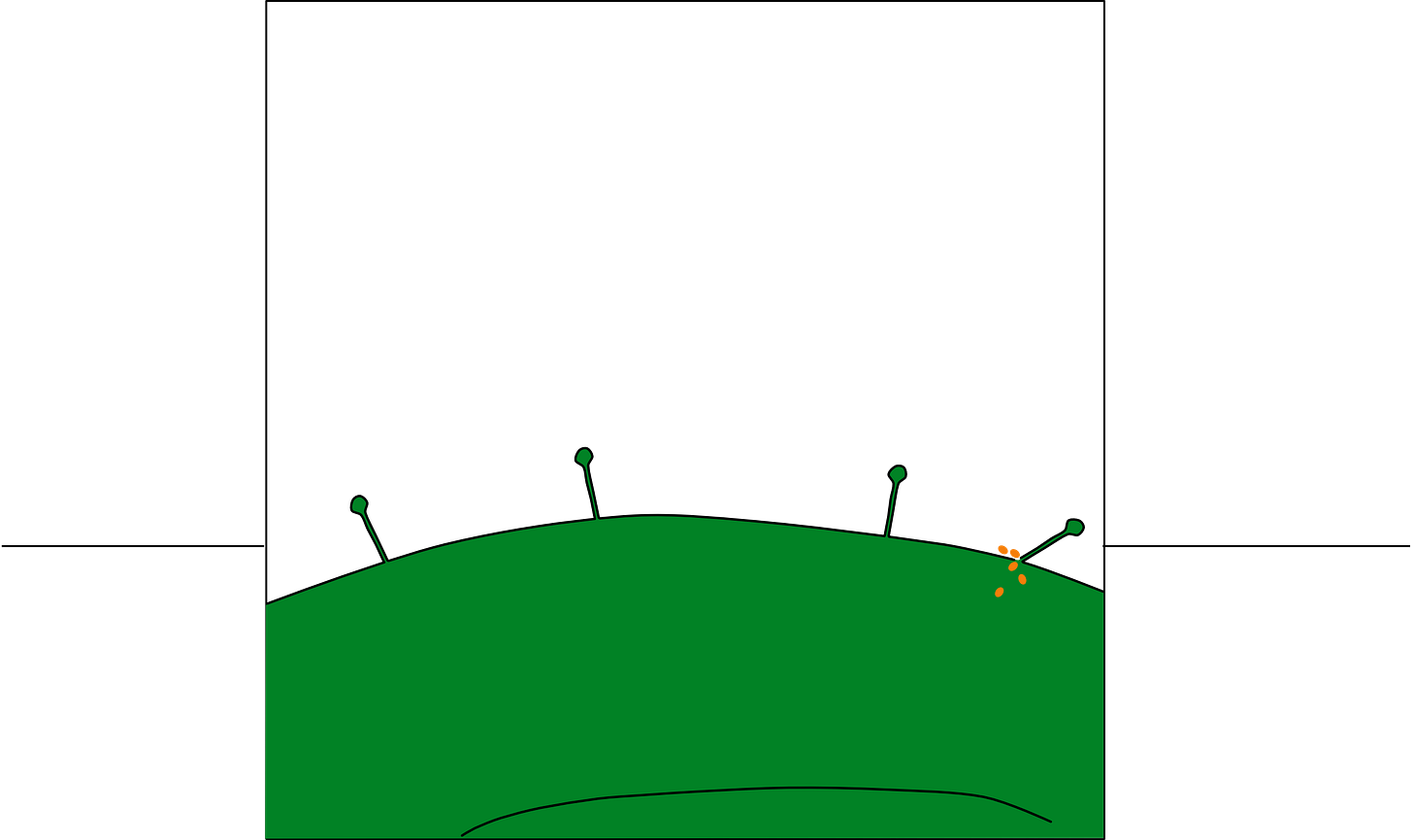Plants are pretty good at halting entrance to unwanted pathogens. Pathogens do, however, still find a way in. Bacteria like to use natural openings, like stomata or wounds caused by insects. For some bacteria it is known how they enter plants, and this can help with protecting plants against those bacteria. But for others it is a guess how they manage to enter.
One for which farmers and researchers guess how it enters the plant is the bacteria that cause fire blight in apple trees, Erwinia amylovora. For a long time, scientists guessed that it enters the leaves of apple trees when they are damaged by wind or insects. This however didn’t line up with what farmers observed. Fire blight infections were often when there were not a lot of insects or wind around. Leaving the question of how do these bacteria enter the apple tree leaves?
The authors of a new study “The fire blight pathogen Erwinia amylovora enters apple leaves through naturally occurring wounds from the abscission of trichomes” set out to find out.
Huddling around trichomes
The first thing they did is observing where the bacteria actually settle. They colour labelled the bacteria, so they could see where it ended up. This was not as expected around stomata, or wound sites, but around trichomes. The researchers noticed the bacteria group around non-glandular and glandular trichomes, leaf hairs. Especially at locations when those trichomes were nearby veins.
As such the researchers took a close look at those trichomes. Importantly, they did not notice natural openings nearby. Now apple tree leaves are serrated, like a bread knife. The researchers noticed that the glandular trichomes where the bacteria huddled together were often located at the tips of the serrated edge.
But as it was still a mystery how the bacteria could enter the leaves, the researchers studied the trichomes over the time. From the first unfolding of the leave till it was mature. They noticed, for the glandular trichomes that at the time of leaf unfolding, they were often attached to some other part of the leaf. As if they were caught on something.
Waiting for a tear
Although a natural part of leaf development, glandular trichomes that were stuck, often slowly broke off. Creating a small tear, just the place where the bacterium was looking for so it could enter the leaf.
As it is a natural part of development, this tear was quickly closed off, so only the young leaves got infected by the fire blight bacteria. Exactly like the farmers see happening in their orchards.
Now it is known that the trichomes of apple trees easily break off during development, breeders can select for that. For example, for trees with less trichomes, or less serrated leaves.
Literature
Millett, F., Standish, J., Scanley, J., Miller, K., Inguagiato, J., Zuverza-Mena, N., Abril, M., Robinson, V., Li, Y., Sundin, G.W. and Zeng, Q. (2025), The fire blight pathogen Erwinia amylovora enters apple leaves through naturally occurring wounds from the abscission of trichomes. Plant J, 123: e70472. https://doi.org/10.1111/tpj.70472




Elegant bit of work. One spin of from it would be to see how hairiness correlates with susceptibility to fire blight. I presume the evolutionary advantage of hairs is to reduce water loss and to deter some insects, so there will be a trade off in breeding less hairy apple trees.